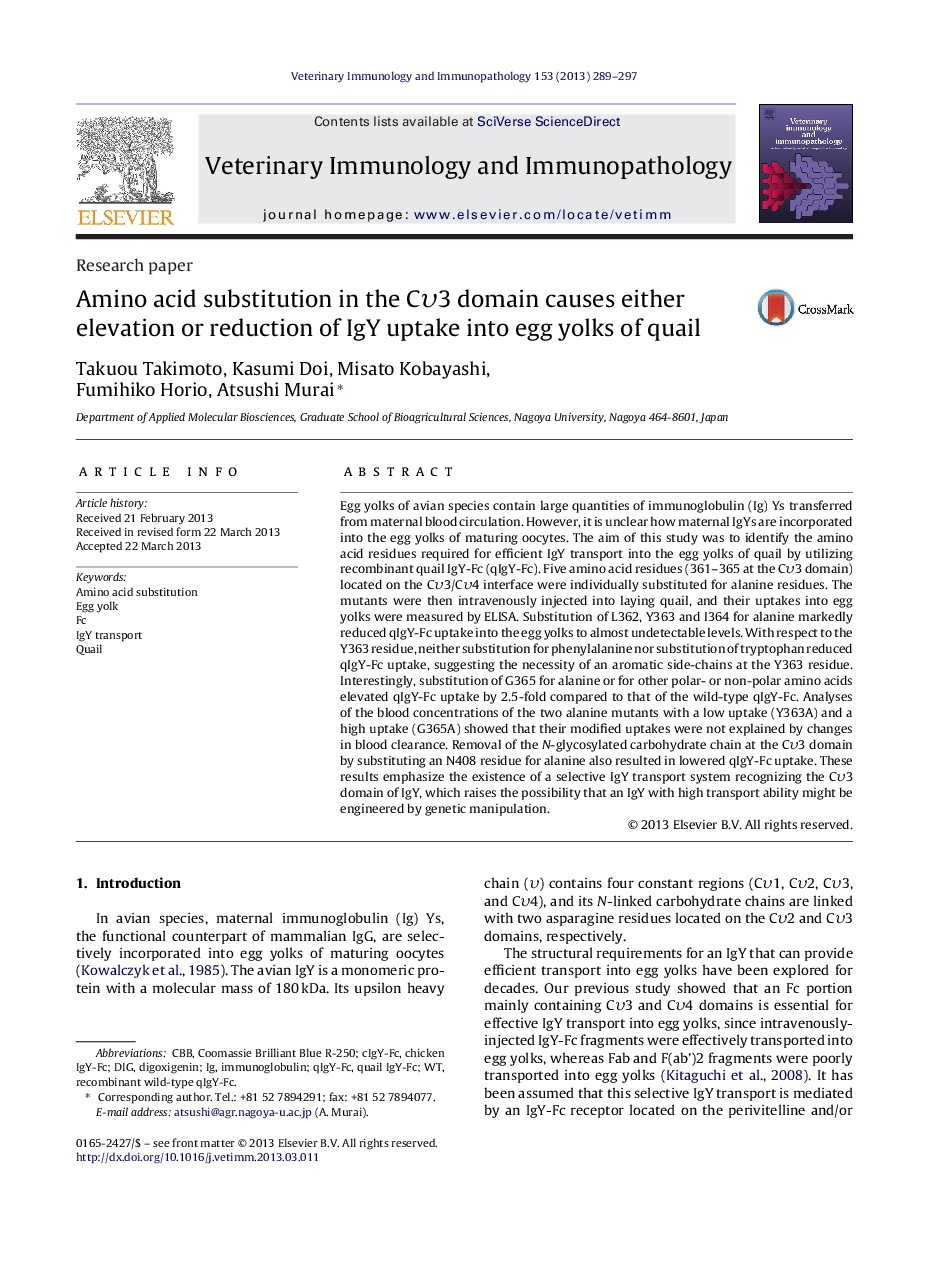| Article ID | Journal | Published Year | Pages | File Type |
|---|---|---|---|---|
| 2461657 | Veterinary Immunology and Immunopathology | 2013 | 9 Pages |
Egg yolks of avian species contain large quantities of immunoglobulin (Ig) Ys transferred from maternal blood circulation. However, it is unclear how maternal IgYs are incorporated into the egg yolks of maturing oocytes. The aim of this study was to identify the amino acid residues required for efficient IgY transport into the egg yolks of quail by utilizing recombinant quail IgY-Fc (qIgY-Fc). Five amino acid residues (361–365 at the Cυ3 domain) located on the Cυ3/Cυ4 interface were individually substituted for alanine residues. The mutants were then intravenously injected into laying quail, and their uptakes into egg yolks were measured by ELISA. Substitution of L362, Y363 and I364 for alanine markedly reduced qIgY-Fc uptake into the egg yolks to almost undetectable levels. With respect to the Y363 residue, neither substitution for phenylalanine nor substitution of tryptophan reduced qIgY-Fc uptake, suggesting the necessity of an aromatic side-chains at the Y363 residue. Interestingly, substitution of G365 for alanine or for other polar- or non-polar amino acids elevated qIgY-Fc uptake by 2.5-fold compared to that of the wild-type qIgY-Fc. Analyses of the blood concentrations of the two alanine mutants with a low uptake (Y363A) and a high uptake (G365A) showed that their modified uptakes were not explained by changes in blood clearance. Removal of the N-glycosylated carbohydrate chain at the Cυ3 domain by substituting an N408 residue for alanine also resulted in lowered qIgY-Fc uptake. These results emphasize the existence of a selective IgY transport system recognizing the Cυ3 domain of IgY, which raises the possibility that an IgY with high transport ability might be engineered by genetic manipulation.
